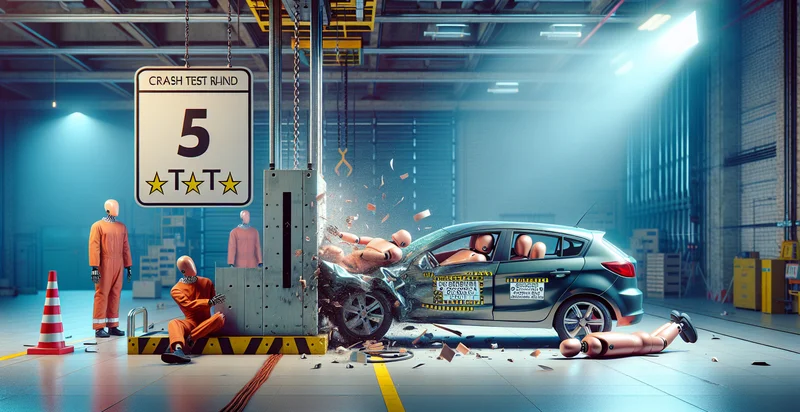Identify vehicle safety rating
using AI
Below is a free classifier to identify vehicle safety rating. Just upload your image, and our AI will predict the safety rating of various vehicle models - in just seconds.

Contact us for API access
Or, use Nyckel to build highly-accurate custom classifiers in just minutes. No PhD required.
Get started
import nyckel
credentials = nyckel.Credentials("YOUR_CLIENT_ID", "YOUR_CLIENT_SECRET")
nyckel.invoke("vehicle-safety-rating", "your_image_url", credentials)
fetch('https://www.nyckel.com/v1/functions/vehicle-safety-rating/invoke', {
method: 'POST',
headers: {
'Authorization': 'Bearer ' + 'YOUR_BEARER_TOKEN',
'Content-Type': 'application/json',
},
body: JSON.stringify(
{"data": "your_image_url"}
)
})
.then(response => response.json())
.then(data => console.log(data));
curl -X POST \
-H "Content-Type: application/json" \
-H "Authorization: Bearer YOUR_BEARER_TOKEN" \
-d '{"data": "your_image_url"}' \
https://www.nyckel.com/v1/functions/vehicle-safety-rating/invoke
How this classifier works
To start, upload your image. Our AI tool will then predict the safety rating of various vehicle models.
This pretrained image model uses a Nyckel-created dataset and has 7 labels, including Average, Basic, Excellent, Good, Poor, Superior and Very Good.
We'll also show a confidence score (the higher the number, the more confident the AI model is around the safety rating of various vehicle models).
Whether you're just curious or building vehicle safety rating detection into your application, we hope our classifier proves helpful.
Related Classifiers
Need to identify vehicle safety rating at scale?
Get API or Zapier access to this classifier for free. It's perfect for:
- Insurance Assessment: Insurance companies can leverage the vehicle safety rating identifier to evaluate the risk associated with various vehicles. By analyzing the safety ratings, insurers can determine premiums based on a vehicle's safety features and historical performance, leading to more accurate pricing and better risk management.
- Fleet Management Optimization: Companies managing vehicle fleets can utilize the identifier to select and maintain safer vehicles. By regularly assessing safety ratings, fleet managers can make informed decisions on vehicle purchases and replacements, ultimately reducing accident rates and associated costs.
- Consumer Guidance: The vehicle safety rating identifier can be integrated into automotive review platforms to help consumers make informed purchasing decisions. By providing detailed safety ratings alongside other vehicle specifications, consumers can compare options and choose vehicles with the highest safety features.
- Regulatory Compliance Monitoring: Government agencies can use the safety rating identifier to ensure that manufacturers comply with vehicle safety standards. By regularly reviewing safety ratings, these agencies can identify vehicles that may require recalls or additional scrutiny, enhancing public safety.
- Marketing Strategy Development: Automotive manufacturers can leverage safety rating data to inform their marketing strategies. Highlighting superior safety ratings can differentiate their vehicles in competitive markets, appealing to safety-conscious consumers and enhancing brand reputation.
- Research and Development Focus: Automotive engineers and designers can utilize safety ratings to identify trends in vehicle performance and consumer preferences. By analyzing the impact of safety features on ratings, manufacturers can prioritize innovations that improve vehicle safety in future models.
- Third-Party Validation: Vehicle safety organizations can employ the identifier to provide third-party validation of vehicle safety claims. This independent assessment can enhance credibility and build consumer trust, as well as inform advocacy efforts aimed at improving vehicle safety regulations.


